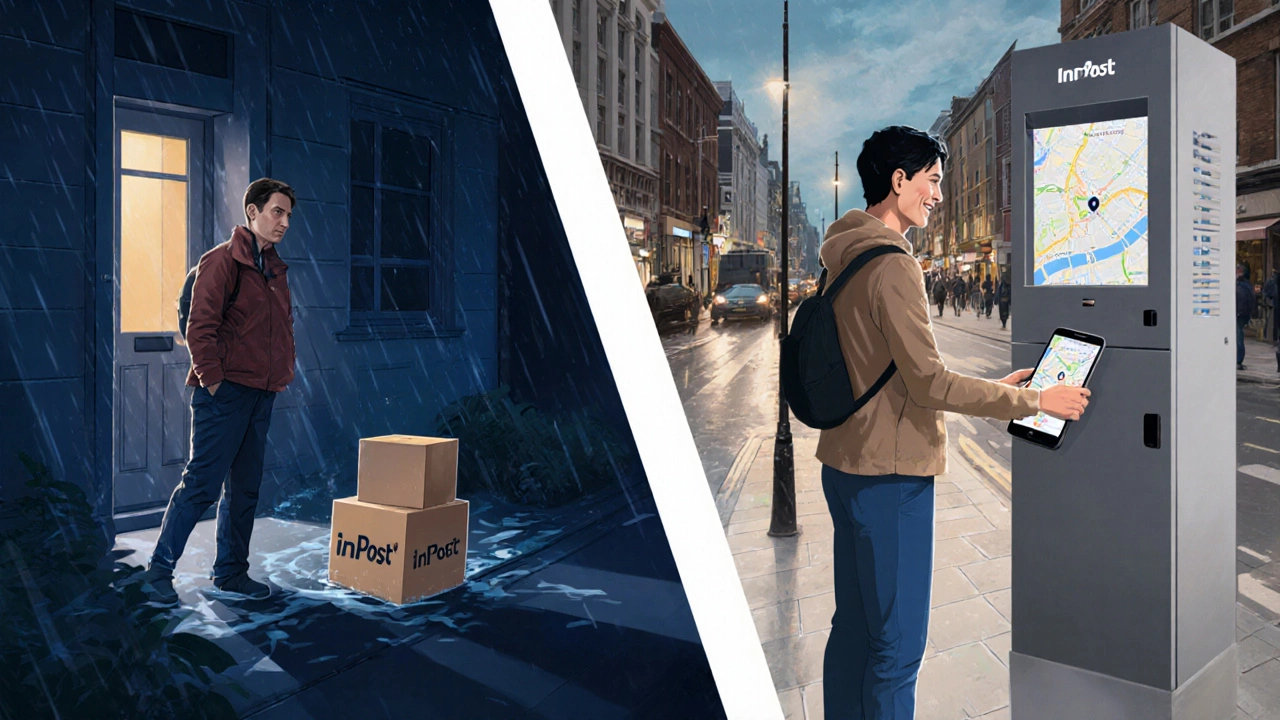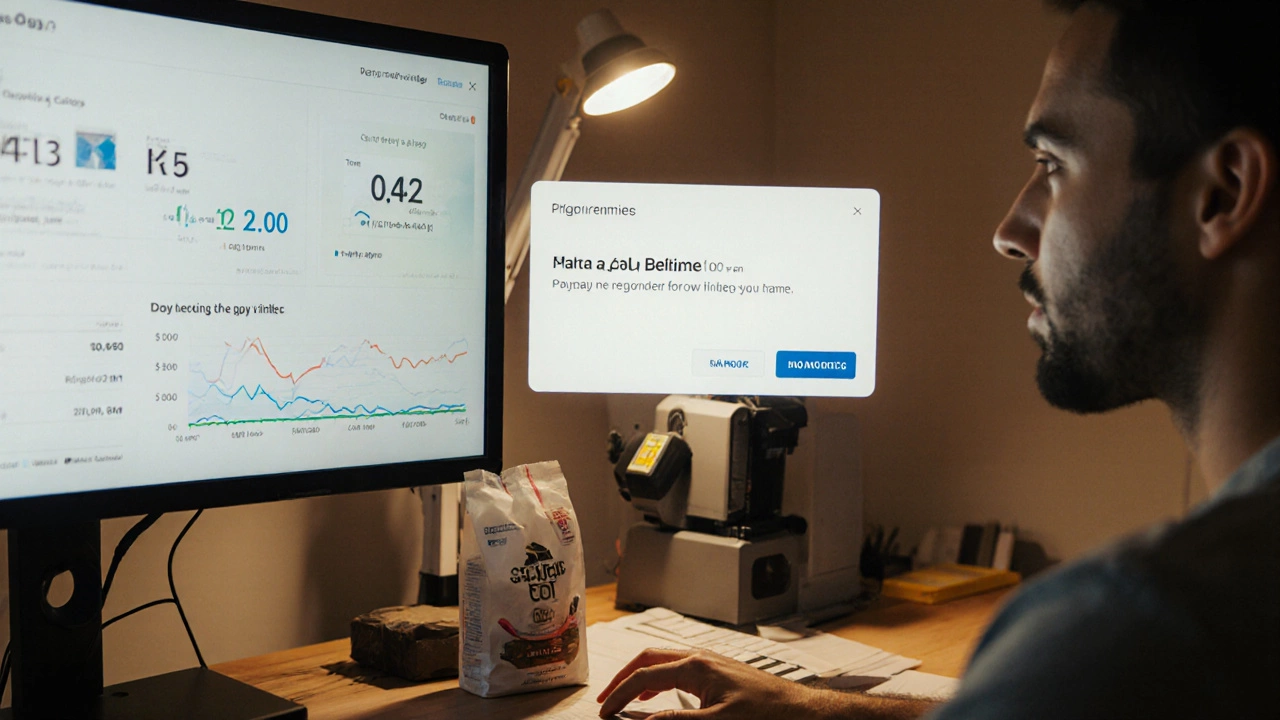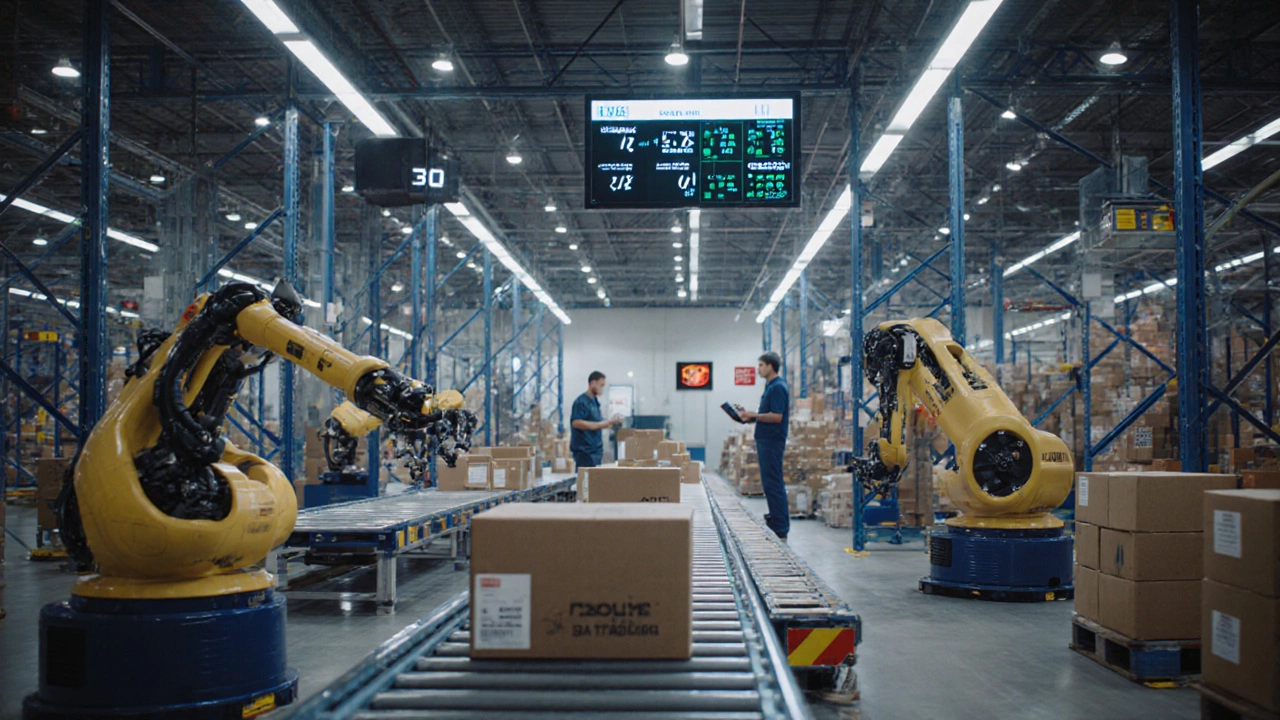E-Commerce Shipping Cost Calculator
Running an online store isn’t just about having a sleek website and good product photos. If your logistics fall apart, customers will leave-and they won’t come back. E-commerce logistics is the hidden engine behind every delivered package. It’s not one step. It’s a chain of connected processes, and if any link breaks, your business pays the price.
Order Processing: The First Domino
It starts the moment someone hits ‘Buy’. Order processing isn’t just clicking ‘Confirm’ in your dashboard. It’s verifying payment, checking inventory in real time, and flagging issues before they become customer service nightmares. A delay here means delays everywhere else.
Take a small UK-based fashion brand. They get 500 orders a day. If their system doesn’t instantly update stock levels across warehouses, they’ll accidentally sell 120 black hoodies when they only have 80. That’s not just a lost sale-it’s a canceled order, a refund, and a pissed-off customer. Smart systems auto-allocate inventory based on proximity to the buyer, reducing shipping time and cost. That’s not optional anymore. It’s baseline.
Warehouse Management: Where Things Get Real
Warehouses aren’t just big storage rooms. They’re high-speed sorting centers where robots, barcodes, and humans work in sync. The goal? Get the right item out the door in under 15 minutes from the moment the order hits the system.
How? It’s all about layout and tech. Pick paths are optimized so workers don’t walk miles between bins. RFID tags track every box. Picking accuracy above 99.5% is the standard for serious players. Amazon’s fulfillment centers can process over 1 million items a day because their layout, software, and staff training are tuned like a Formula 1 engine.
Smaller businesses don’t need Amazon-scale tech, but they do need a system that prevents mispicks. A single wrong item sent to a customer can cost 3x more in returns and reputation damage than the product’s value. That’s why even small e-commerce shops now use basic WMS (Warehouse Management Systems) like Zoho Inventory or Sortly. They’re affordable, cloud-based, and cut errors by up to 70%.
Inventory Management: Don’t Guess, Know
Running out of stock? That’s a lost sale. Having too much? That’s cash tied up in boxes collecting dust. Inventory management is the tightrope walk every e-commerce business must master.
It’s not enough to know you have 200 blue sneakers. You need to know where they are, how fast they’re selling, and when to reorder. Seasonal trends matter. A spike in winter coats in November? You need to have them in the right warehouse, not stuck in a depot 300 miles away.
Top performers use demand forecasting tools that pull data from sales history, weather patterns, social trends, and even competitor pricing. A UK-based gadget seller noticed their portable phone chargers sold 40% more on rainy weekends. They started pre-positioning stock near urban centers before forecasted rain-cutting delivery times and boosting conversions.

Shipping and Carrier Integration: Speed Is the New Standard
Customers expect delivery in two days. Some want same-day. That’s the reality in 2025. But you can’t manage 15 different carrier accounts manually. That’s where integrated shipping platforms come in.
Tools like Shippo, Easyship, or even Shopify’s built-in shipping engine let you compare real-time rates from Royal Mail, DHL, UPS, and local couriers. They auto-select the cheapest and fastest option based on weight, destination, and service level. You don’t need to be a logistics expert-you just need to pick the right software.
And don’t forget returns. Reverse logistics is now part of the shipping equation. Over 30% of online fashion orders are returned. A smooth return process isn’t a cost center-it’s a retention tool. Offer free returns, pre-printed labels, and drop-off points at local post offices. Make it easy, and customers buy more.
Last-Mile Delivery: The Make-or-Break Moment
Last-mile delivery is the final 5 miles from your warehouse to the customer’s door. It’s the most expensive part of the whole chain-often costing more than shipping the item halfway across the country. But it’s also the moment the customer forms their final opinion.
Think about it: you’ve handled everything right. The product is perfect. The packaging is clean. The tracking updates are clear. Then the courier shows up at 8 p.m., rings the bell, and leaves the box on the porch in the rain. That’s not a delivery. That’s a disappointment.
Leading e-commerce brands now offer real-time delivery windows, SMS alerts, and even live tracking with map pins. Some let customers choose drop-off locations: lockers, neighbor’s homes, or pickup points at local shops. In the UK, services like InPost and Parcel Motel have over 10,000 locker locations. Customers pick up their orders on their way home from work. No missed deliveries. No waiting around.

Technology and Automation: The Silent Workforce
Automation isn’t just for big companies. It’s the difference between surviving and thriving. Barcode scanners, automated packing stations, conveyor belts-these aren’t luxuries anymore. They’re survival tools.
A Liverpool-based home goods store doubled its order volume in six months without hiring more staff. How? They installed a semi-automated packing station that weighs, labels, and seals boxes in under 30 seconds. It reduced packing errors by 85% and freed up employees to handle customer queries instead of stuffing envelopes.
Even simple tools like Zapier can connect your Shopify store to your inventory system and your courier’s API. When an order comes in, stock drops, a label prints, and a tracking email sends-all without human input. That’s not magic. That’s smart logistics.
Customer Communication: Keep Them in the Loop
People hate the silence. If a package is delayed, they’ll assume the worst. That’s why proactive communication is a core logistics process, not an afterthought.
Send automated updates at key points: order confirmed, packed, shipped, out for delivery, delivered. Use SMS for urgent alerts. Offer a live tracking link. If there’s a delay, tell them why and what you’re doing to fix it. A simple message like, “Your order is delayed due to heavy snow in the North West. We’ve upgraded shipping at no cost to you,” turns frustration into loyalty.
One UK-based pet food brand saw a 40% drop in customer service calls after they started sending personalized delivery videos-short clips showing the package being packed with their pet’s name on the label. It didn’t cost much. But it made customers feel seen.
Performance Tracking: Measure What Matters
You can’t improve what you don’t measure. Track these metrics religiously:
- Order fulfillment time: From order to dispatch. Aim for under 24 hours.
- On-time delivery rate: Percentage of orders delivered by the promised date. Above 95% is good.
- Return rate: Higher than 25%? Look at product descriptions or packaging.
- Cost per order: Total logistics cost divided by number of orders. Reduce this every quarter.
Use dashboards in your WMS or ERP system. If you’re still using spreadsheets, you’re already behind. Real-time data lets you spot bottlenecks before they blow up.
What’s the most critical process in e-commerce logistics?
The most critical process is order fulfillment-the entire chain from receiving the order to handing it to the courier. If this fails, nothing else matters. A delay or error here directly impacts customer satisfaction, returns, and brand reputation. Speed, accuracy, and communication are non-negotiable.
Can small e-commerce businesses handle logistics without big tech?
Yes, but they need the right tools. You don’t need a $100,000 warehouse system. Start with affordable cloud-based solutions like Zoho Inventory, ShipStation, or even Shopify’s built-in tools. Combine them with local courier partnerships and automated email/SMS updates. Many small UK businesses run lean, efficient logistics with under £500/month in tech costs.
How do I reduce shipping costs without slowing down delivery?
Use multi-carrier shipping software to compare real-time rates. Negotiate volume discounts with couriers like Royal Mail or DPD. Consolidate orders where possible. And consider regional fulfillment centers-even one in the Midlands can cut delivery times and costs for half your UK customers. Avoid flat-rate shipping unless you’ve priced it to cover your actual costs.
Why is last-mile delivery so expensive?
Because it’s inefficient. Delivering one package to a single address in a suburban street costs more per unit than shipping 500 packages to a warehouse. Fuel, labor, and failed delivery attempts add up. Solutions like parcel lockers, pickup points, and delivery windows help reduce wasted trips. Some companies even use local bike couriers in cities to cut costs and emissions.
How do returns impact e-commerce logistics?
Returns are a major part of the logistics chain-up to 30% of online orders in fashion and electronics. Poor return handling leads to lost inventory, extra labor, and damaged customer trust. A smooth return process-free labels, easy drop-offs, quick refunds-turns a negative experience into a brand advantage. Treat returns as a feature, not a bug.
E-commerce logistics isn’t glamorous. But it’s the backbone of every successful online business. Get these key processes right-order processing, warehouse management, inventory control, shipping, last-mile delivery, automation, communication, and tracking-and you won’t just deliver packages. You’ll deliver trust.


